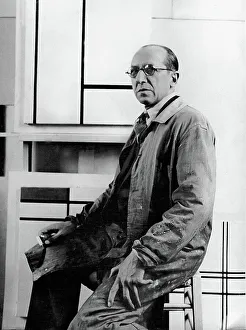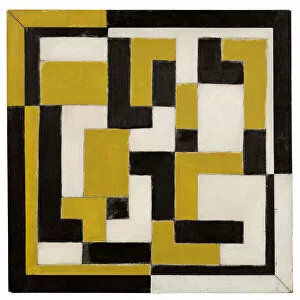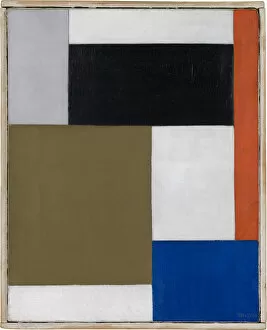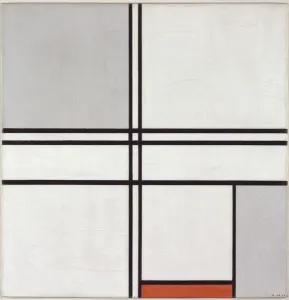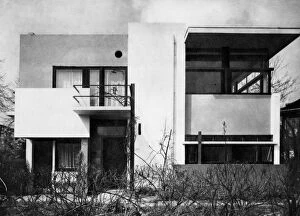Neoplasticism Collection
Neoplasticism, also known as De Stijl, was an influential art movement that emerged in the early 20th century
All Professionally Made to Order for Quick Shipping
Neoplasticism, also known as De Stijl, was an influential art movement that emerged in the early 20th century. It sought to create a universal visual language through the use of geometric shapes and primary colors. Bretonnes, painted by Piet Mondrian in 1913, exemplifies this style with its simplified forms and bold color palette. In a black and white photograph taken in 1934, we see Mondrian in his studio at 26 avenue du Depart. Surrounded by his artworks and tools of creation, he appears focused and contemplative, embodying the spirit of neoplasticism. Stained-Glass Composition VIII from 1918-1919 showcases how this artistic movement extended beyond traditional canvas paintings. The vibrant stained glass piece combines geometric patterns with translucent colors to create a harmonious composition. Head; Tete is another example of Mondrian's exploration of neoplastic principles on canvas. Painted in 1914, it features abstracted facial features rendered with bold lines and primary hues. Study for a Composition from 1923 demonstrates Mondrian's meticulous process. Through gouache and ink on tissue paper as well as pen and ink on paper, he experiments with different arrangements before finalizing his compositions. Composition from 1917-1918 captures the essence through its intersecting verticals and horizontals filled with primary colors. This oil painting represents harmony achieved through balance and simplicity. The Construction of Space - Time III further explores Mondrian's fascination with creating spatial relationships using abstract forms. This artwork presents overlapping planes that suggest depth within a two-dimensional space. Composition in Dissonances (oil on canvas) from 1919 challenges traditional notions of beauty by incorporating contrasting elements such as sharp angles alongside softer curves while maintaining overall harmony. Composition from 1923-24 showcases Mondrian's mastery over form and color arrangement once again. With precise lines and primary colors, he creates a dynamic composition that engages the viewer's eye.


